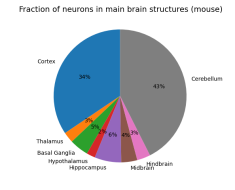
doi: 10.1111/iwj.14607.
Online ahead of print.
Affiliations
Item in Clipboard
Int Wound J.
.
Abstract
Surgical site infection (SSI) is one of the most common complications of posterior cervical surgery. It is difficult to diagnose in the early stage and may lead to severe consequences such as wound dehiscence and central nervous system infection. This retrospective study included patients who underwent posterior cervical surgery at The Second Affiliated Hospital and Yuying Childrens Hospital of Wenzhou Medical University from September 2018 to June 2022. We employed several machine learning methods, such as the gradient boosting (GB), random forests (RF), artificial neural network (ANN) and other popular machine learning models. To minimize the variability introduced by random splitting, the results underwent 10-fold cross-validation repeated 10 times. Five measurements were averaged across 10 repetitions with 10-fold cross-validation, the RF model achieved the highest AUROC (0.9916), specificity (0.9890) and precision (0.9759). The GB model achieved the highest sensitivity (0.9535) and the KNN achieved the highest sensitivity (0.9958). The application of machine learning techniques facilitated the development of a precise model for predicting SSI after posterior cervical surgery. This dynamic model can be served as a valuable tool for clinicians and patients to assess SSI risk and prevent it in clinical practice.
Keywords:
machine learning; posterior cervical surgery; prediction model; surgical site infection.
© 2023 The Authors. International Wound Journal published by Medicalhelplines.com Inc and John Wiley & Sons Ltd.
References
REFERENCES
-
-
Blam OG, Vaccaro AR, Vanichkachorn JS, et al. Risk factors for surgical site infection in the patient with spinal injury. Spine (Phila Pa 1976). 2003;28(13):1475-1480. doi:10.1097/01.Brs.0000067109.23914.0a
-
-
-
Zhou J, Wang R, Huo X, Xiong W, Kang L, Xue Y. Incidence of surgical site infection after spine surgery: a systematic review and meta-analysis. Spine (Phila Pa 1976). 2020;45(3):208-216. doi:10.1097/brs.0000000000003218
-
-
-
McFarland A, Reilly J, Manoukian S, Mason H. The economic benefits of surgical site infection prevention in adults: a systematic review. J Hosp Infect. 2020;106(1):76-101. doi:10.1016/j.jhin.2020.05.011
-
-
-
Mehta AI, Babu R, Sharma R, et al. Thickness of subcutaneous fat as a risk factor for infection in cervical spine fusion surgery. J Bone Joint Surg Am. 2013;95(4):323-328. doi:10.2106/jbjs.L.00225
-
-
-
Cheng CW, Cizik AM, Dagal AHC, et al. Body mass index and the risk of deep surgical site infection following posterior cervical instrumented fusion. Spine J. 2019;19(4):602-609. doi:10.1016/j.spinee.2018.09.014
-



